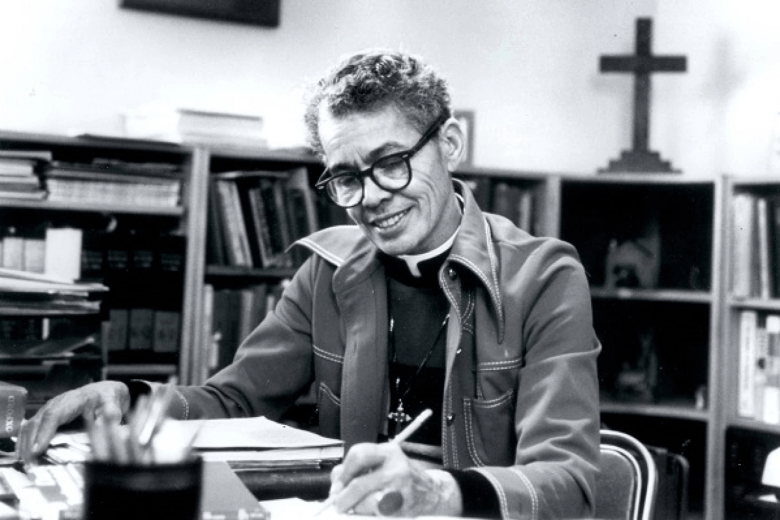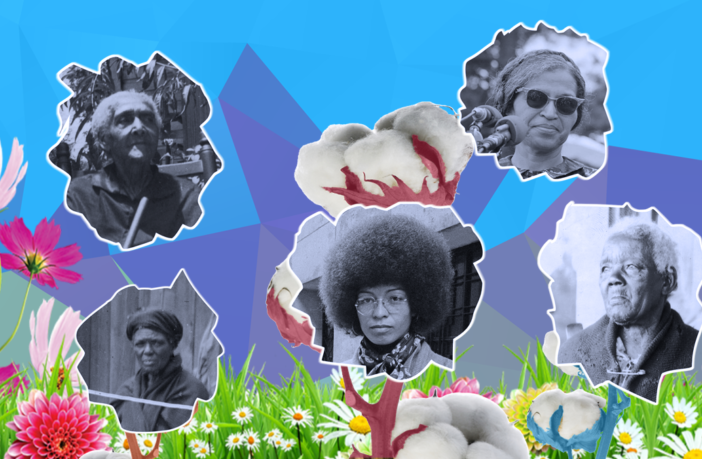Last Updated on February 20, 2023 by BVN
S.E. Williams |
For thousands of years before the slave trade and colonization of Africa, before Christianity became a substitute for ancient spiritual traditions, many African societies were matriarchal.
The enslaved were forced through these systems to adopt and adapt to existing in a white-washed world similar to what was experienced by many who remained behind in colonized Africa.
Early Africa, the origin of the world’s earliest civilizations evolved from the “spiritual, economic and social efforts” of the women of that land, in matriarchal societies.
With this in mind, it makes sense that the Black girls, youth and women stolen from the Motherland beginning in the early 1600’s carried within them the spirit of matriarchy just as sure as they carried the seeds of future generations.
The stories of Tempie Herndon Durham (l), Lucindy Lawrence Jurdon (m), Sarah Gudger (r) are recorded in the Slave Narratives gathered in the 1930s as part of the Federal Writers’ Project (FWP) of the Works Progress Administration, later renamed Work Projects Administration (WPA).
Reading excerpts from Slave Narratives and learning the stories of our foremothers, including the unsung lives of female slaves like Tempie Herndon Durham or Sarah Gudger or Lucindy Lawrence Jurdon and millions of other women, one can learn how that spirit of matriarchy endured.
As such, it should then come as no surprise that a Harriet Tubman would rise up to lead passengers on the underground railroad or a Suzie King Taylor though hired as a laundress during the Civil War would instead serve as a nurse to wounded soldiers, or that a Sojourner Truth would have courage to escape slavery with her infant daughter and become a leading abolitionist and activist for women’s rights.
If we understood the nature of Black women, we would not be surprised to learn how a Pauli Murray and her associate, Adelene McBean, spent time in a rat infested jail cell for refusing to give up their seats on a bus in the segregated South, setting the stage for the day, 15 years later, when Rosa Parks, would repeat their experiment with Gandhi’s theory of non violent resistance.
“I am the dark girl who crossed the red sea carrying in my body the seed of the free. I am the one who worked in the field bringing the cotton and the corn to yield. I am the one who labored as a slave, beaten and mistreated for the work that I gave. Children sold away from me, husband sold, too, no safety, no love, no respect was I due…“
Langston Hughes
If we knew the genetic and spiritual legacy of Black women we would recognize the Ida B. Wells’, Mary McLeod Bethunes, Fannie Lou Hammers, Angela Davis’, Patrisse Cullors’, Tarana Burkes and others like them as they rise.
Behind each of these women—from Tempie Herndon Durham to Tarana Burke—and all those named in between, there are millions of other Black women who live or have lived quiet lives of everyday heroism as each in their own way do/did what it is/was given to them to do to help move the cause of justice and equality forward.
Among the many urgent and necessary tasks required in this effort is certainly the nurturing and caring for the children and youth of each successive generation. And yet, institutional and structural racism has made even this most natural prospect of womanhood an almost impossible task.
Research tells us that still births and infant deaths combined during slavery, may have resulted in a mortality rate as high as 50% among slave children within the first year of their lives, and among those who survived, enslaved mothers lived with the constant fear of their children being sold away.
 Pauli Murray, the first Black woman in America to be ordained an Episcopal priest, lost her battle to desegregate the University of North Carolina in 1938, and she, along with Adelene McBean, were arrested for their refusal to move to the rear of a bus in the segregated South 15 years before the legendary actions of Rosa Parks. (source: UNC Digital Library and Archives).
Pauli Murray, the first Black woman in America to be ordained an Episcopal priest, lost her battle to desegregate the University of North Carolina in 1938, and she, along with Adelene McBean, were arrested for their refusal to move to the rear of a bus in the segregated South 15 years before the legendary actions of Rosa Parks. (source: UNC Digital Library and Archives).
Such loss was as real as the death of a child to a grieving slave mothers. And yet, these women persevered.
The courage and leadership of these women is the same resilience we witness today as babies born to Black women are more than twice as likely to die versus those born to White women and yet, Black birthing people persevere.
When it comes to the loss of life of Black children, it is the same resilience and determination we witnessed with Mamie Till-Mobley in 1955, when she stood before the world and demanded justice for her son, Emmett. And, it is the same “stay on to fight on spirit” we’ve witnessed over and over again in recent years as one matriarch after another stands in the spirit of Till-Mobley, demanding justice for their own sons including but not limited to mothers like Trayvon Martin’s mother, Sabrina Fulton; Michael Brown’s mother, Lezley McSpadden; Jordan Davis’ mother, Lucy McBath; and more recently, Karon Blake’s mother, Londen Blake; and Tyre Nichols mother, RowVaughn Wells.
It is this same matriarchal spirit that manifests in other ways like the courageous determination of Black women like Vice President Kamala Harris and Supreme Court Justice Ketanji Brown Jackson, who despite qualifications and overwhelming support endure the harsh criticism and vitriolic hate speech as they broke new barriers for their people and this nation.
Every day in every way Black women show up and show out because they know just like those before us who endured the middle passage, survived slavery, and managed through reconstruction, the old Jim Crow, the new Jim Crow, and the continuing battles for equity and justice, that as daughters of the mothers of humanity, today’s Black women carry the seeds and impetus of matriarch in their being just as their bodies carry the seeds of future generations.
As Langston Huges extolled, they “march ever forward, breaking down bars.”
Of course, this is just my opinion. I’m keeping it real.



